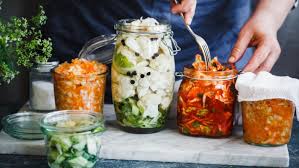Fermenting vegetables is one of the oldest and safest methods of food preservation. This process relies on the natural microbes found on plant surfaces and involves using salt to ferment vegetables, turning them into tangy, probiotic-rich foods. Whether you’re making sauerkraut, kimchi, or pickles, fermenting vegetables not only enhances their flavor but also boosts their nutritional value.
Earlier this year, I attended a workshop by Sandor Katz, a well-known author on wild fermentation, who demonstrated his technique for fermenting cabbage and radishes. Using sea salt, Katz massaged the salt into chopped vegetables and then gently squeezed them by hand, a technique that was new to me. I now use this method regularly in my own fermenting practice.
Why Ferment Vegetables?
Fermentation uses salt to create an environment where beneficial bacteria, like lactobacilli, thrive. These bacteria consume the sugars in the vegetables, producing lactic acid that preserves the food and gives it its signature tangy taste. The salt also inhibits harmful bacteria, making fermentation one of the safest preservation methods. Once vegetables reach the right level of sourness, they can be stored in the fridge for several months, providing a vitamin-rich, fat-free snack whenever needed.
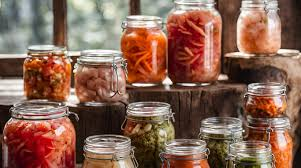
Key Guidelines for Successful Fermentation
- Use Fresh, Clean Produce
Start with fresh, blemish-free vegetables. Thoroughly clean both your produce and any utensils or surfaces you will use. This minimizes the risk of contamination. - Salt Measurement
Getting the right salt-to-vegetable ratio is important for successful fermentation. Use about 2 tablespoons (34 grams) of non-iodized salt per quart of vegetables. Since vegetables release their juices, this measurement can be flexible, but the brine should taste slightly saltier than what you would eat directly, or about the saltiness of sea water. If the brine becomes too salty after a couple of days, you can dilute it by adding fresh water. - Temperature Control
Fermentation works best in cool environments. Aim for room temperatures between 60°F and 70°F (15°C – 20°C). Warmer conditions (above 75°F/24°C) can cause the vegetables to become soft and slimy, while cooler temperatures help them stay crisp and retain their texture.
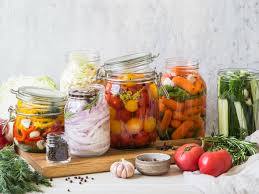
The Fermentation Process
To ferment vegetables in small batches, glass canning jars are ideal. Common vegetables for fermentation include cabbage, carrots, cauliflower, cucumbers, garlic, kohlrabi, radishes, snap beans, and turnips. Here’s how to do it:
- Prepare the Vegetables
Chop or slice your vegetables into bite-sized pieces. Place them in a large bowl or pan, then sprinkle with salt. Massage the salt into the vegetables for at least five minutes, which helps draw out moisture. - Add Flavoring (Optional)
If desired, add spices such as chili powder, turmeric, fennel seeds, or ginger to enhance the flavor and color. - Pack the Jars
Transfer the salted vegetables into a wide-mouth glass jar, pressing them down firmly to release more juice. Leave about 2 inches (5 cm) of space at the top of the jar. - Weigh Down the Vegetables
Fill a clean plastic sandwich bag with cool water and place it inside the jar, creating a weight and an airlock to prevent the vegetables from floating above the brine. This also helps keep out air and potential contaminants. - Daily Maintenance
Each day, stir the vegetables with a clean spoon and check to ensure they are fully submerged in the brine. Add more filtered water if needed and press down on the vegetables again before sealing with the water-filled bag. It’s normal for the fermentation process to produce strong odors, especially during the first few days. - Taste Testing
Start tasting your fermented vegetables after about five days. Once they reach the “tangy” flavor you prefer, transfer them to the refrigerator to slow down the fermentation process. Full fermentation may take anywhere from 5 to 21 days, depending on the ambient temperature and your taste preferences.
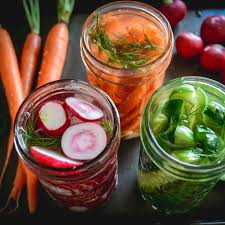
Storing and Enjoying Your Fermented Veggies
Once your vegetables have reached the desired tang, place the jars in the fridge to halt further fermentation. The cool temperature preserves them for several months. Fermented vegetables make excellent, probiotic-rich snacks, adding both flavor and nutrition to your diet.
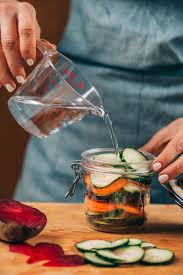
By following these simple steps, you can easily preserve your garden vegetables, enjoy their health benefits, and savor their delicious flavors for months to come!
